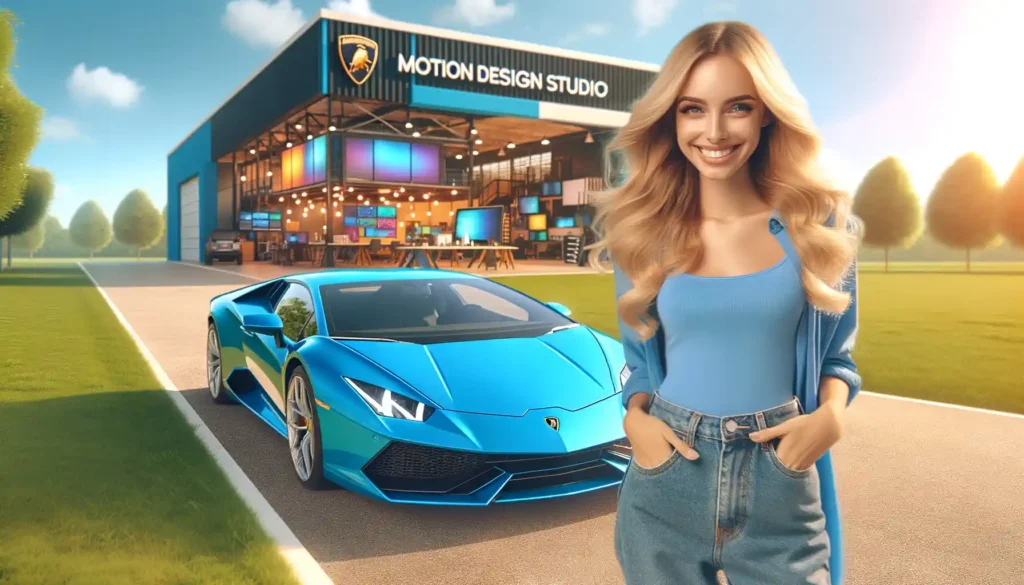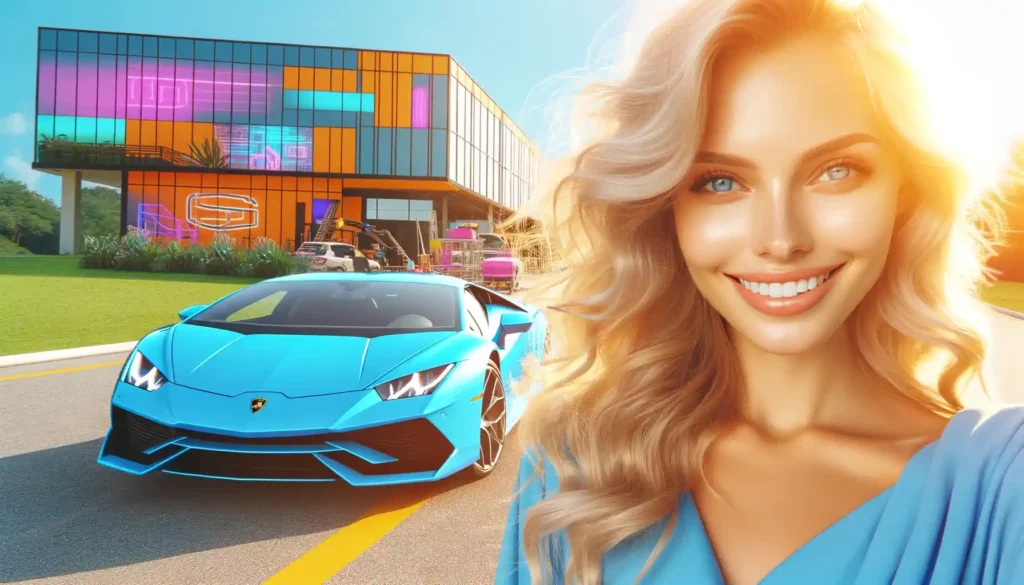Professional Motion Graphics Software is essential for creating compelling video content that captivates audiences and communicates messages effectively.

Mastering your motion graphics toolset is crucial. Here, we explore practical tips and strategies to help you get the most out of professional motion graphics software.
1. Choose the Right Software
Key Players
- Adobe After Effects: Known for its robust features and integration with Adobe Creative Cloud.
- Cinema 4D: Preferred for 3D motion graphics.
- Blender: A powerful, open-source option for both 2D and 3D animation.
- Autodesk Maya: Industry standard for more complex 3D modeling and animation.
- Apple Motion: A less expensive alternative for those embedded in the Apple ecosystem.
Selection Criteria
- Your Needs: Match the software’s capabilities with the type of projects you handle (e.g., TV commercials, corporate videos).
- Your Skill Level: Some tools are more beginner-friendly than others.
- Integration: Consider how well the software integrates with other tools you use.
- Budget: Professional software can be expensive; consider subscriptions vs. outright purchases.
The Best Free 3D Motion Design Software: Blender

Blender is an incredibly powerful tool for 3D modeling, animation, and rendering, and it stands out as the premier free software for motion design. It offers a comprehensive suite of features that rival many expensive commercial software, making it a favorite among hobbyists, independents, and professional studios alike. This article delves into why Blender is highly regarded in the motion design community and how you can leverage its capabilities to create stunning 3D motion graphics.
Introduction to Blender
Blender is an open-source 3D computer graphics software toolset used for creating animated films, visual effects, art, 3D printed models, motion graphics, interactive 3D applications, virtual reality, and more. Developed by the Blender Foundation, Blender offers a range of tools for modeling, sculpting, texturing, and particle simulation, as well as 2D animation workflows seamlessly integrated into its system.
Key Features of Blender
1. Comprehensive 3D Toolset
- Modeling and Sculpting: Blender’s modeling toolset is robust, supporting the creation of complex 3D shapes and designs. Its sculpting capabilities allow for high-detail models, perfect for character animation and effects.
- Animation & Rigging: It has a full rigging system to create skeletal structures for animation with inverse kinematics and forward kinematics.
- Simulations: Blender includes fluid, smoke, hair, and cloth simulation capabilities to bring natural movements and textures to life in animations.
- Rendering: The software contains powerful rendering options, including Eevee, a real-time render engine, and Cycles, a ray-traced render engine that produces cinema-quality visuals.
2. Video Editing
Blender also includes a built-in video editor. This allows the user not just to create animations but to edit them with transitions, adjustments and filters all within the same software.
3. Extensibility
- Add-ons and Plugins: Users can expand Blender’s functionality with custom add-ons and plugins, many of which are developed by its active community.
- Scripting: Advanced users can script in Python to automate tasks, customize workflows, and create new tools.
4. Node-Based Compositing
Nodes are a powerful way to handle post-production workflows, including color grading, effects integration, and more. Blender’s node-based compositor lets you layer adjustments and effects on your renders without needing external software.
5. Grease Pencil
Blender’s Grease Pencil tool bridges the gap between 2D drawing and 3D animation, with full support for 2D animation and motion graphics within a 3D environment.
Why Choose Blender for 3D Motion Design?

Cost-Effective
Blender is completely free, which makes it accessible to anyone without the financial burden often associated with high-end 3D software.
Community and Learning Resources
With a massive community of users, Blender benefits from a wealth of tutorials, forums, and dedicated websites where users can learn and share their knowledge and creations.
Regular Updates and Improvements
Blender is updated regularly, with improvements and new features that keep it at the cutting edge of 3D motion design technology.
Versatility
Blender is used for a wide range of applications from visual effects in movies and television to video games, architecture, and scientific visualization.
Getting Started with Blender
To start using Blender, visit the Blender Foundation’s website to download the latest version. Blender supports all major operating systems: Windows, macOS, and Linux. Resources for learning Blender include the Blender Network, Blender Artists online community, and tutorial channels on YouTube such as Blender Guru or CG Geek.
Blender offers a rare proposition: advanced, comprehensive 3D animation and motion design capabilities, completely free. Whether you’re a beginner looking to explore the world of 3D animation or a professional needing a powerful tool for motion graphics, Blender is a highly capable solution. Its robust community and wealth of learning resources ensure that once you begin your Blender journey, you will have plenty of support along the way. Embrace Blender and transform your creative ideas into impressive 3D animations and motion designs.
2. Master the Basics of Motion Design
Before diving deep into complex features, ensure you have a solid understanding of the basics. Learn keyframe animation, basic effects, and how to manipulate text and shapes. Online tutorials, webinars, and classes can accelerate your learning curve.
3. Utilize Templates and Presets
Most motion graphics software comes with a range of templates and presets. These resources can dramatically speed up your workflow and inspire your designs.
- Templates: Use them as a starting point to learn advanced techniques.
- Presets: They can help you achieve complex effects quickly, such as particle effects or color adjustments.
4. Explore Advanced Features
As you become comfortable with the basics, begin exploring more advanced features such as:
- Particle Systems: For creating sophisticated effects like smoke, fire, and liquid simulations.
- Motion Tracking: To integrate 3D elements seamlessly into live-action footage.
5. Optimize Your Workflow
Efficiency is key in motion graphics, especially under tight deadlines.
- Keyboard Shortcuts: Learn and customize shortcuts to speed up your workflow.
- Pre-compositions: Organize your projects by nesting compositions.
- Render Queues: Set up render queues to process large projects or multiple versions.
6. Keep Updated
Motion graphics software is continually evolving. New updates often include enhanced capabilities, bug fixes, and new features.
- Software Updates: Regularly update your software to keep up with the latest advancements.
- Trending Techniques: Stay informed about new trends and techniques through tutorials, forums, and blogs.
7. Join Communities
Joining forums and online communities can provide support, inspiration, and networking opportunities. Platforms like Behance, Vimeo, and Reddit have vibrant motion graphics communities where creators share their work and tips.
8. Practice Regularly
The best way to master any software is to use it regularly. Set yourself challenges or personal projects to apply the skills you learn. Practice different styles and techniques to build a versatile portfolio.
Conclusion
Motion graphics software is a powerful tool in the arsenal of any video creator. By selecting the right software, mastering both fundamental and advanced techniques, and staying updated on new developments, you can enhance your creative output and streamline your production process. Remember, the goal is not just to create visually stunning graphics, but to tell compelling stories that resonate with your audience. Embrace the continual learning curve, and your skills and projects will thrive.